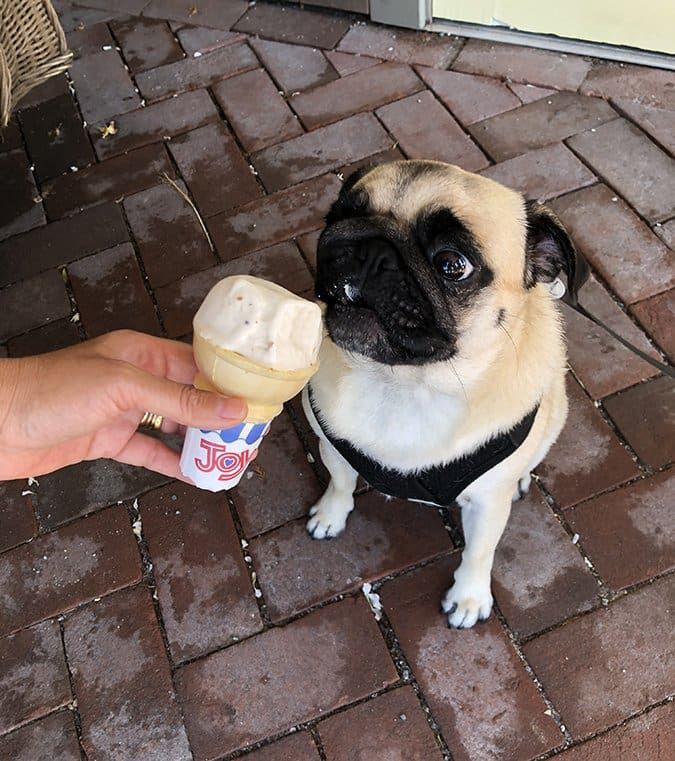You scream, we scream, but do dogs scream for ice cream? It’s cute (and Instagrammable) to see a pair of puppy paws wrapped around a rainbow-sprinkled ice cream cone, but can dogs eat ice cream or should pups stick to specialty dog ice cream treats?
Ice cream, of course, contains milk. And just like humans, some dogs (not all) are lactose-intolerant. If you feed milk to a lactose-intolerant dog, he may experience diarrhea, painful gas, or vomiting. Of course, ice cream is a treat, not a diet staple, so start by giving your dog no more than a spoonful, and wait for a day to see if he has any negative response to the frozen dessert. As long as he does not, he should be able to enjoy a prudent amount as an occasional treat.
Milk isn’t the only issue when it comes to feeding your pup ice cream. Sugar is another primary concern, especially as sugar is sometimes accompanied by xylitol, an artificial sweetener that can be lethal to dogs. Xylitol is a sugar substitute often found in chewing gum, mints, certain brands of peanut butter, toothpastes, and sugar-free pudding, yogurt, and Jell-O; it can also turn up in ice cream, so be sure to read the ingredients list.
See “13 Household Items Toxic to Dogs” for more on xylitol and other common dangers to dogs.
Something else to take into consideration is the flavor of the ice cream you share with your dog. As many pet owners know, chocolate can be harmful to dogs, so choose other flavors.
Dog Ice Cream and Other Alternatives for Dogs
There are doggy-friendly alternatives to traditional ice cream made for humans. Frozen yogurt usually contains significantly less lactose than ice cream, making it a good alternative for dogs who show signs of being lactose-intolerant. Just be sure the one you choose is not saturated with sugar and sweeteners (also make sure it does not contain xylitol).
“Nice cream” is another good alternative. The vegan, homemade version of ice cream, “nice cream” is made by putting a frozen banana in a food processor along with the flavor of your choice.
Then there are the dog ice cream commercial products. There are two powdered dog ice cream “mixes” on the market (Pooch Creamery and Puppy Scoops); each requires that you add water, stir, freeze, and serve. FrostyPaws (Purina’s foray into doggie ice cream) is sold in some pet supply stores and grocery stores, but contains unnecessary additives like gelatin, soy flour, corn oil, salt, and maltodextrin and polydextrose (chemical sweeteners).
Often, going the homemade route is a better, healthier choice than commerical dog ice creams. If you’re looking to make your own dog ice cream at home with just a few, simple, healthful ingredients, the Humane Society offers a peanut butter pup-sicle recipe, or the tuna pops, PB&J smoothie pops, or frozen meatball recipes offered on Dog Treat Kitchen.
Best Ice Cream Flavors for Dogs
Flavors that are both non-toxic and yummy to dogs include: pumpkin, peanut butter, cinnamon, coconut, and banana. Carob chips are also a healthier alternative to chocolate chips and can be used not just to add as a decadent topping but to incorporate in the flavor as well (think peanut butter-carob ice cream).
Flavors to absolutely avoid include: chocolate, anything with raisins, chocolate-covered nuts, macadamia nuts, and anything that contains xylitol.






